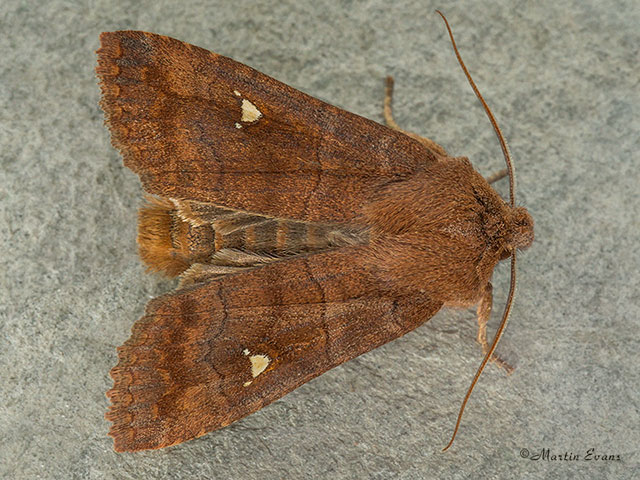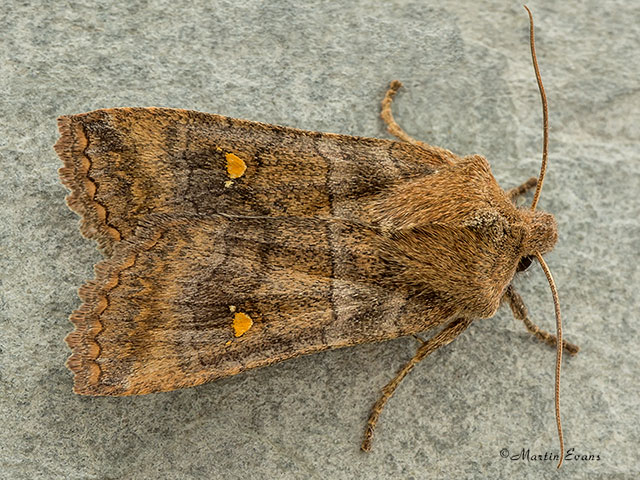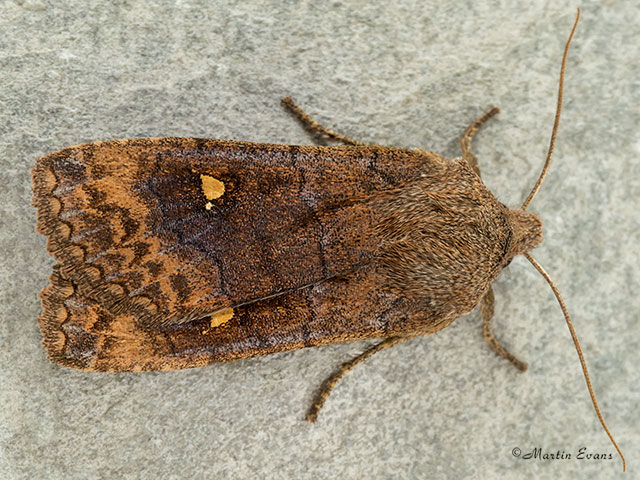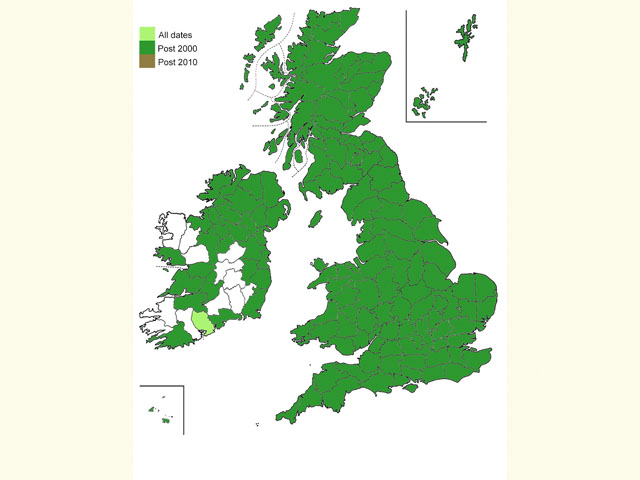Noctuidae
73.210 Satellite Eupsilia transversa (Hufnagel, 1766)
Common
Similar species: The satellite markings in the kidney mark make this moth unmistakeable.
Forewing: 17 to 20mm
Habitats: Deciduous woodland, parkland, scrub, mature hedgerows, moorland and gardens.
Habits: The moth feeds after dark at over-ripe berries and sugar. It nectars at Ivy blossom and comes to light.
Foodplant: The larva feeds nocturnally on Pedunculate Oak, Sessile oak, elms, Sweet Chestnut, limes, Hazel, Field Maple, Blackthorn, Hawthorns, birches, sallows, Aspen, poplars and many other deciduous trees. It hides between spun leaves during the day. The larger larvae will eat other moth larvae. The full-fed larva spins a cocoon under the soil where it rests for ten to twelve weeks before pupating.
On the European mainland it has been recorded feeding on Small-leaved Elm, apple and pear.






